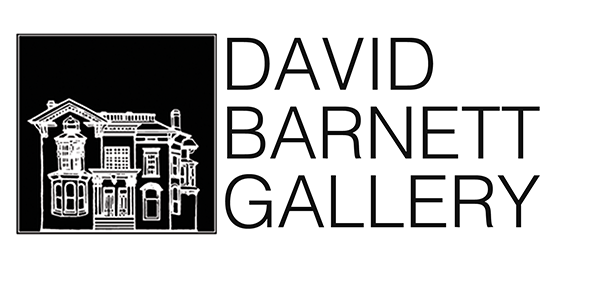

Improvisation 7 (plate, folio 37) from Klänge (Sounds)
Artist: Wassily Kandinsky
Price:
$27,550.00
Medium: Prints


More Details
Creation Date: 1911
Materials: Woodcut
Dimensions: 8" x 5"
Condition: Excellent condition
Finish: Framed
About the Item: The present woodcut print comes from 'Klänge (Sounds),' a book of original graphics and poetry by Wassily Kandinsky. This first edition was released in an edition of 300, each book signed and numbered by the artist. The title of the album and this particular print, 'Improvisation,' demonstrated Kandinsky's interest in music and how abstract musical forms could be translated into images on a two-dimensional surface. This particular composition is difficult to read, but through the abstraction, one can make out various figures and a landscape beyond. Signed with encircled 'K' in the block, lower right (from the book, signed in ink, ed. 117/300). Framed to conservation standards using 100 percent acid free archival materials including a silk-lined matting with 1/4 inch bevel, museum glass, and a gold-gilded moulding. Ref. Roethel 124
Artwork Size: 7 1/2" x 5"
Frame Size: 22" x 19 1/2"
Artwork Size: 7 1/2" x 5"
Frame Size: 22" x 19 1/2"

About The Artist
Wassily Wassilyevich Kandinsky (16 December 1866 – 13 December 1944) was an influential Russian painter and art theorist. He is credited with painting the first purely abstract works. Born in Moscow, Kandinsky spent his childhood in Odessa. He enrolled at the University of Moscow, studying law and economics. Successful in his profession—he was offered a professorship (chair of Roman Law) at the University of Dorpat—he began painting studies (life-drawing, sketching and anatomy) at the age of 30. In 1896 Kandinsky settled in Munich, studying first at Anton Ažbe's private school and then at the Academy of Fine Arts. He returned to Moscow in 1914, after the outbreak of World War I. Kandinsky was unsympathetic to the official theories on art in Communist Moscow, and returned to Germany in 1921. There, he taught at the Bauhaus school of art and architecture from 1922 until the Nazis closed it in 1933. He then moved to France where he lived for the rest of his life, becoming a French citizen in 1939 and producing some of his most prominent art. He died at Neuilly-sur-Seine in 1944.
More Galleries to Explore














 Facebook
Facebook
 Twitter
Twitter
 Email
Email


















